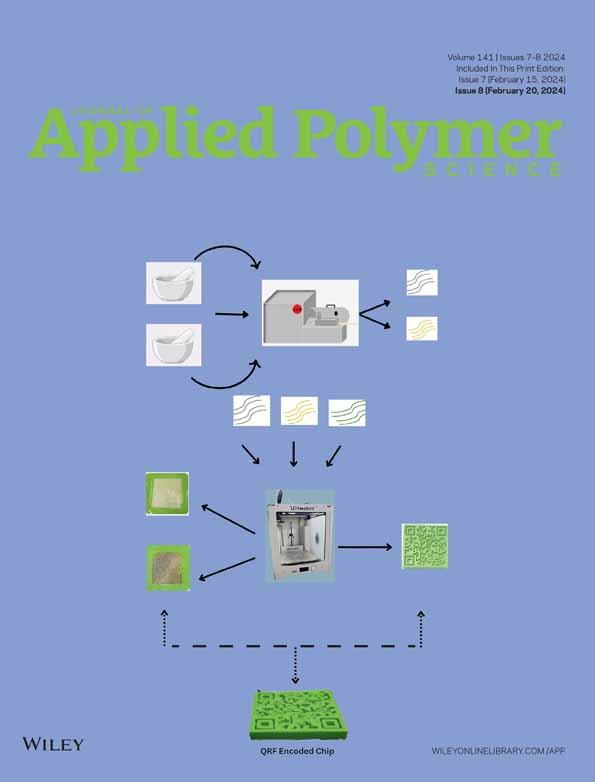The role and mechanism of temporary blocked isocyanate at interface between polyethylene terephthalate high-strength fibers and activation oil
Abstract
In this paper, activation oil added with temporary blocked isocyanate was chosen to enhance interfacial adhesion in polyethylene terephthalate (PET) high-strength fibers reinforced rubber via one-step dipping method, in which the temporary blocked isocyanate could be activated during vulcanization process of rubber. The effect of isocyanate in enhancing adhesion between PET high-strength fibers and rubber was explored. The amount of residual resorcinol formaldehyde latex on the surface of fibers and H-extraction force of PET high-strength fibers reinforced rubber are both obviously increased with 5% activation oil addition especially containing 2% isocyanate. After peeling fibers from composite rubber, the amount of residual rubber on the surface of fibers with activation oil is increased, which is even higher when further adding temporary blocked isocyanate. Based on the results of infrared spectra and nuclear magnetic resonance carbon spectra, the added isocyanate is confirmed to bond with the PET component most likely through reacting with the terminal hydroxyl groups on the surface of PET fibers. This interface reinforcement strategy based on one-step dipping method will contribute to studies on PET high-strength fibers reinforced rubber.
Open Research
DATA AVAILABILITY STATEMENT
The data used to support the findings of this study are available from the corresponding author upon request.




